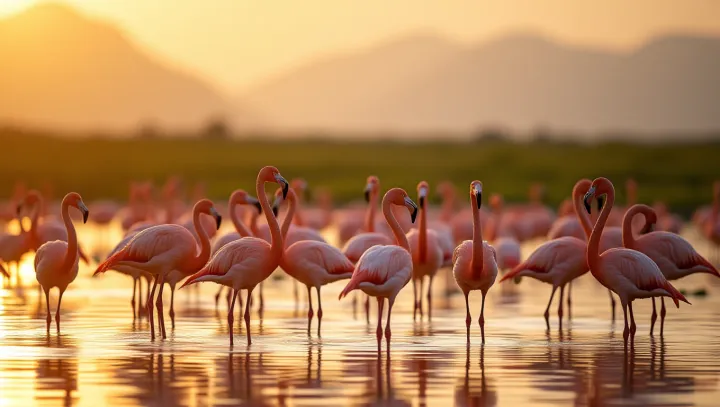Flamingos: Nature's Unique Masterpieces

Spectacular and enigmatic, flamingos are among the most distinct creatures inhabiting our planet's wetlands. In Tanzania, they not only captivate wildlife enthusiasts with their vivid pink plumage but also serve as essential indicators of ecosystem health. Characterized by their long necks, flamingoes are known for various eye-catching habits such as standing on one leg for hours.
Researchers suggest that this behavior might aid in minimizing heat loss, although the exact reasons remain partly speculative. Flamingos' ecological significance extends beyond their eye-catching appearances. Through their feeding, they stir up nutrient-rich sediments, promoting a vibrant ecosystem that benefits numerous aquatic species.
Conservationists emphasize the importance of protecting flamingo habitats, which face threats from human encroachment and climate change. Dr. Sarah Thompson, an ornithologist at the Global Biodiversity Institute, states, 'Preserving these areas is vital not just for flamingos but for the entire range of species and their ecological communities.' Flamingos, therefore, remain vibrant symbols of nature's resilience and beauty, urging humanity to cherish and protect the delicate balances within wetland ecosystems.
As guardians of these natural wonders, we are as much reliant on them as they are on us.
